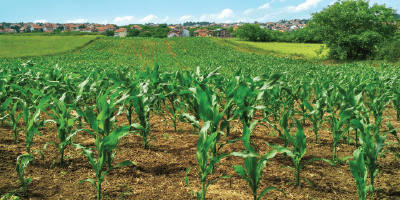
Agriculture is the art and science of cultivating the soil, growing crops and raising livestock. It includes the preparation of plant and animal products for people to use and their distribution to markets.
Agriculture provides most of the world’s food and fabrics. Cotton, wool, and leather are all agricultural products. Agriculture also provides wood for construction and paper products.
These products, as well as the agricultural methods used, may vary from one part of the world to another.
Start of Agriculture
Over centuries, the growth of agriculture contributed to the rise of civilizations.
Before agriculture became widespread, people spent most of their lives searching for food—hunting wild animals and gathering wild plants. About 11,500 years ago, people gradually learned how to grow cereal and root crops, and settled down to a life based on farming.
By 2,000 years ago, much of the Earth’s population had become dependent on agriculture. Scholars are not sure why this shift to farming took place, but it may have occurred because of climate change.
When people began growing crops, they also began herding and breeding wild animals. Adapting wild plants and animals for people to use is called domestication.
The first domesticated plant was probably rice or corn. Chinese farmers were cultivating rice as early as 7500 BCE.
The first domesticated animals were dogs, which were used for hunting. Sheep and goats were probably domesticated next. People also domesticated cattle and pigs. Most of these animals had once been hunted for hides and meat. Now many of them are also sources of milk, cheese, and butter. Eventually, people used domesticated animals such as oxen for plowing, pulling, and transportation.
Agriculture enabled people to produce surplus food. They could use this extra food when crops failed or trade it for other goods. Food surpluses allowed people to work at other tasks unrelated to farming.